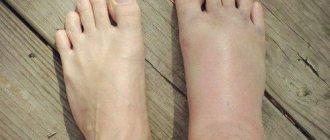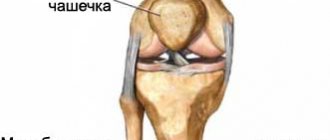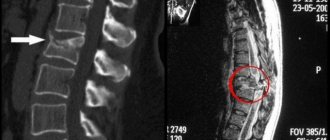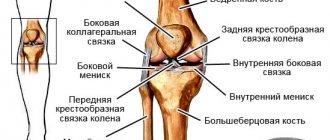- June 26, 2019
- Orthopedics and traumatology
- Author Etxt
A sprained ankle, the symptoms of which everyone should know, is a fairly common injury. Moreover, people of any age receive it. For those who play sports, this is a very common occurrence. But people with an inactive lifestyle can also injure their ankles, since their muscles and ligaments are weaker. In women, such an injury is most often associated with wearing shoes with high and uncomfortable heels.
If you receive such an injury, you should immediately consult a doctor. He will set the limb. After this, treatment is carried out at home using various ointments, gels and other means.
Causes of injury
Everyone knows where the ankle is. Its medical name is ankle joint. It is fixed on both sides by ligaments. Located at the transition point to the foot. If you twist your leg unsuccessfully, you will get a dislocation, and with it a sprain or rupture of the ligaments.
The most common causes of ankle sprains are:
- wearing uncomfortable shoes, high heels;
- sports training;
- walking, running;
- sudden movements of the legs;
- jumping from great heights;
- vehicle accidents.
Depending on the cause of the injury, the foot turns inward or outward.
Ankle Sprain Degrees
Depending on the manifestation of symptoms, the following degrees of ankle sprain are distinguished:
- Light (initial) degree. Characterized by ligament damage without bone displacement. Moderate pain is felt and slight swelling appears.
- Average (second) degree. There is a partial rupture of the ligaments that surrounded the bone. The pain is intense, noticeable swelling occurs, and the skin in the ankle area becomes hot.
- Severe degree. The ligaments are completely torn, the bone is pushed out of the joint, and a rather loud click is heard. The pain is acute, the hematoma and swelling occupy a large area, it is impossible to step on the leg.
The exact extent of damage can be determined using an x-ray.
Symptoms
It is important to know what an ankle looks like when it is sprained. A bruise and redness appear.
Swelling occurs at the site of injury when the ankle sprains. The shape of the joint changes. It can be directed inward or outward. The heel bone moves forward, during the injury the pain is strong and sharp, but then it decreases, although it does not go away completely.
Foot mobility is limited. If you try to stand on this limb, the pain will intensify again. When an injury occurs, a clicking sound will be heard. It indicates a dislocation and at the same time a ligament rupture. In the damaged area, tissue temperature may increase.
Causes
Often, muscle strains and bone fractures have similar causes. They may be as follows:
- Falling and then landing on your heels. Thus, the limbs are exposed to sudden and brute force, which can lead to both disruption of the integrity of bones and rupture or stretching of tendons or muscle tissue.
- Sports injuries that occur when playing a sport that places a lot of stress on the legs. Most often, football players, basketball players, runners, and gymnasts suffer from this.
- Wearing high heels or the wrong size. In such cases, the leg most often turns inward.
Unfortunately, even in the absence of intense sports activities or the correct selection of shoes, it is impossible to completely protect yourself from injuries of this kind.
How to distinguish an ankle fracture from a sprain
Many people are interested in how to understand whether a victim has a dislocated or broken ankle. To distinguish them, look at the symptoms.
| Criteria | Dislocation | Fracture |
| Tissue integrity | The joint capsule and ligament are torn | Damaged bones |
| External symptoms | The shape of the joint has been changed. It becomes uneven. The bulges are located at a short distance from each other | There is mobility at the fracture site. When open, bones are visible. A bruise appears |
| Edema | Applies to the entire area where the joint is injured | First, it affects only the injured area, and then the entire joint. |
| Pain | Moderate, although sometimes acute | Sharp |
| Limb length | Does not change | There are changes, especially if there is divergence and mixing of bone structures |
Taking into account all these differences, it is possible to determine the fracture and dislocation of the ankle.
Symptoms of a fracture
An open bone injury is quite difficult to confuse with something else, since it tears the soft tissue and shows out. A closed fracture does not have such pronounced manifestations, and therefore a preliminary diagnosis can be made based on the following indirect manifestations:
- Pain that does not go away over time, nor does its intensity decrease. When you try to palpate the injury site, it intensifies significantly.
- The injured area becomes swollen, redness and increased skin temperature are observed.
- Significant hematomas appear as a result of subcutaneous hemorrhage when blood vessels are damaged by bone and its fragments.
- In some cases, when pressed, a crunching and grinding sound of broken bones is possible.
- Sometimes deformation of the limb becomes noticeable.
If such symptoms are observed, it is necessary to conduct an X-ray examination in order to prescribe subsequent adequate treatment.
Severe degree
In a severe ankle sprain, the symptoms are pronounced. This condition is characterized by complete rupture of the ligaments. In this case, severe pain is felt, the foot does not move.
A bruise appears on the ankle and below. In this place, the temperature of the tissues rises. The joint is displaced. With this form of dislocation, the pain does not go away on its own, and special injections with painkillers are required. Treatment requires plaster casts and sometimes surgery.
Ankle fracture
The difference between a sprain and a fracture is that with the latter type of injury, damage to the integrity of the bone tissue is diagnosed. There are two types of fractures:
- Open, in which there is a significant displacement of the bone with rupture of soft tissue and the formation of a large number of fragments. Such fractures are difficult to treat, and the rehabilitation period takes much longer. With an open fracture, heavy bleeding often occurs.
- Closed ones are characterized by slight displacement of the bone. In this case, small vessels are affected, causing a hematoma to form.
It is closed fractures that can often be confused with muscle or ligament sprains, since their symptoms are similar.
First aid
First aid for a sprained ankle is aimed at controlling symptoms. It is as follows:
- Place the affected limb so that the damaged joint is completely at rest. Sometimes experts advise placing a bolster under your foot. It should be soft. It can be made from clothes. This option is used in cases where the injury occurred on the street, where there are no necessary conditions.
- Apply a cold compress to the damaged area. This helps reduce swelling and pain.
- The ankle must be secured with a tight bandage. It is best to use an elastic bandage. But if you don’t have it at hand, then other options are also suitable - a belt, a scarf, a scarf.
- If the victim is in severe pain, he is allowed to be given a painkiller to ease the suffering. But local anesthesia is prohibited. Only a doctor can do this. This is explained by the fact that otherwise, during palpation during diagnosis, the symptoms will be blurred and it will be difficult to determine the exact condition of the affected limb.
After all these steps, be sure to call an ambulance. This applies to cases where the patient has a severe form of dislocation. In other situations, he is supposed to be taken to the emergency room (hospital) himself. There, the doctor will examine the victim, determine the shape and degree of the dislocation, and select appropriate therapy.
Treatment
Further treatment for a sprained ankle involves realigning it. To do this, the doctor first administers local anesthesia. If surgery is required in the future, the doctor will not realign the limb. Your leg will need to be placed in a plaster cast. Other fixing agents, including orthopedic ones, can be used.
Drug therapy involves the use of drugs with anti-inflammatory and analgesic effects. If necessary, additional hemostatic medications are prescribed. To strengthen, products with vitamins and calcium are used.
Self-reduction
In emergency cases, when it is not possible to go to the hospital immediately, you need to know what to do if you sprain your ankle. In such situations, you will have to adjust the limb yourself. But this procedure is considered dangerous.
You need to bend your knee at a right angle. One hand holds the shin, and the other should be placed on the outer edge of the ankle. In one sharp movement you need to press from the outside and in.
This procedure causes very strong and sharp pain. Before carrying out it, you need to check that there is no fracture in this place. Otherwise, if you adjust the limb yourself in such a situation, the victim’s condition will worsen.
After the limb is set, you need to place a cold compress on the place where the ankle is located. This will remove swelling and reduce pain. Then you need to secure the place with an elastic bandage or improvised means. Do not tighten the bandage to prevent disruption of blood flow in the injured leg.
How to give first aid for an ankle injury
The victim needs first aid if a dislocation is suspected. The faster he gets help, the faster his symptoms will subside. What to do immediately after getting injured:
- carefully remove shoes and tight clothing and provide maximum rest to the injured leg, excluding all attempts to move;
- to reduce swelling, elevate the leg using a bolster made from improvised materials (blankets, pillows, clothes);
- immobilize the joint by applying a tight bandage made of an elastic bandage (if not available, a scarf, scarf, gauze or regular bandage). It must be taken into account that after applying the bandage, the foot should be at a right angle to the axis of the leg. The bandage should not compress the leg too much;
- apply ice or a cold compress to the affected area (apply only through several layers of fabric);
- help the victim get to a trauma center as soon as possible. It must be remembered that for moderate and severe dislocations, reduction should be carried out 2-3 hours after the injury.
Before visiting the doctor, you should not eat or drink, because realignment of the joint may require intravenous anesthesia, which is performed on an empty stomach. Painkillers should only be taken if there is acute pain in the ankle. It is undesirable to give injections with anesthetic drugs (novocaine, lidocaine).
Treatment at home
If the dislocation is mild, you can treat it at home. In this case, the following rules must be observed:
- Position your leg so that it is constantly at rest. Under no circumstances should you strain her.
- Place a cold compress on the affected area.
- Secure the ankle with a tight bandage.
3-5 days after injury, warm, rather than cold, compresses are used. To do this, you can use vodka or hot water, which will help remove swelling.
Many people are interested in how to lubricate a sprained ankle. The best medications to help with such an injury are Indovazin, Bystrumgel, and Voltaren.
They eliminate inflammatory processes at the site of the resulting stretch and accelerate the process of tissue regeneration. Before going to bed, it is recommended to keep the sore limb in warm water in which salt is dissolved. To reduce pain, analgesics can be taken.
Signs of a Sprained Ankle
First, let's look at the anatomy. Each human leg has 2 ankles - medial and lateral. This is the name given to the distal parts of the tibia and fibula, which cover the talus on both sides and form the ankle joint. The ankles on both sides are strengthened by ligaments, which are torn or stretched when dislocated.
The main symptoms of a sprained or subluxated ankle include:
- Pain in the ankle area. It is always present, but with additional load it becomes stronger.
- Edema. Appears almost immediately after injury.
- Subcutaneous hemorrhages or hematomas (not always observed).
- Impaired foot mobility.
- Tissue hyperthermia (increased local temperature).
- Violation of the shape of the joint.
- A characteristic click. Heard when receiving a dislocation.
Depending on how badly the ankle was damaged during the injury, there are 3 degrees of severity.
Folk remedies
In addition to traditional therapy, it is additionally recommended to use traditional medicine. This comprehensive approach will speed up healing and recovery. But you need to use traditional medicine recipes only after receiving permission from the treating doctor.
Warm compresses are used to treat a sprain. This procedure is allowed only at least 3 days after the dislocation occurs. Warm compresses improve blood circulation, reduce pain, and remove swelling.
The following compresses are recommended:
- Lactic. Heat the liquid to 30 °C. Soak gauze, folded several times, in milk. You can also use other cotton fabric. Apply it to the sore spot, cover it with plastic wrap (or a bag), and then insulate it with a blanket.
- Onion. You need to grind the root vegetable in a blender or meat grinder. The gruel must be mixed with salt. Suitable for both table and sea food. Both components are taken in equal parts. The pulp should be placed on gauze and applied to the sore spot. Then cover with film and a blanket.
- Vodka. Both vodka and rubbing alcohol are suitable for this recipe. But in the latter case you will have to dilute it with water. The liquid needs to be warmed up a little. Then soak a gauze bandage in it and wrap it around the affected ankle. Cover the top with film and add additional insulation.
- Tea. For this option, it is recommended to use green tea. The compress is made in the same way as in the case of milk.
Such compresses help relieve the unpleasant symptoms of a dislocation. They should be kept for at least 30 minutes. It is best to do the procedure before going to bed. Sessions should be repeated until the ankle is completely restored.
Surgery
If the dislocation is caused by other serious injuries, then immediate hospitalization of the patient is required. Surgical intervention is prescribed in the following cases:
- a fracture was sustained along with a dislocation;
- the tibiofibular joint was injured along with a dislocation;
- There is a rupture of the delta-shaped ligament along with a dislocation.
The doctor assesses the general condition of the patient. If a person has a torn ligament, the doctor makes an incision and examines the cartilage. After this, he sews the ligaments together or fixes them to the bone (if they are completely torn off). Then the wound is stitched and a bandage with plaster is applied.
Diagnostics
Only a doctor can distinguish a fracture from a dislocated foot. To do this, he will need to conduct a survey, examination, palpation of the leg, and several physical tests.
Reflexes will be checked and, of course, the final verdict will be made only after analyzing the x-rays.
Trimalleolar fracture with foot dislocation: x-ray and osteosynthesis diagram
How many x-rays will be taken: 2 or 3 - the doctor decides. He does this based on a preliminary diagnosis, which is recorded in the medical history, and is the basis for taking free X-rays in the quantity and projections required for diagnosis.
For your information. CT and MRI are not used for the primary diagnosis of traumatic injuries.
The cost of computed tomography and magnetic resonance imaging is too high, plus they take a long time to perform. And in situations, especially when a severe injury has been sustained, for example, a trimalleolar fracture with displacement and subluxation of the foot, every minute counts.
The sooner osteosynthesis is performed, the greater the chance of a positive prognosis for the complete restoration of leg function.
Healing and rehabilitation times
The duration of recovery of ankle function depends on the severity of the injury, the timeliness of assistance and the correctness of the selected therapy. In addition, the general condition of the victim, as well as the chosen rehabilitation program, influences.
If the patient has a slight dislocation, then everything will go away in a couple of weeks. If a ligament rupture occurs along with such an injury, the recovery period will take approximately a couple of months.
The rehabilitation program includes the following:
- physiotherapy;
- therapeutic exercises;
- massage.
As for permissible exercises, it is allowed to bend and straighten the leg, and make slow circular movements with the foot. If pain occurs, then do not continue. Gradually the load is increased. All this is done under the supervision of a doctor.
As for massage, it is allowed only from the third day after injury. It must be done by an appropriate specialist.
Prevention
Preventive measures will help prevent dislocation or other joint injuries. The following rules must be followed:
- Choose comfortable shoes. It should be suitable for the size and fullness of the foot. The heel height should be up to 5 cm.
- Do exercises at home to strengthen the joint ligaments and leg muscles. Additionally, it is recommended to play sports.
- Before training, always warm up your muscles before starting the main exercises. Thanks to this, the ligaments will be more elastic.
- Wear special bandages during training.
- Get rid of excess weight.
- Change your diet. It should be balanced, high in vitamins, minerals and other beneficial compounds.
- Always follow safety rules on sports grounds and the workplace.
All of these steps will help minimize the risk of a sprained ankle.










